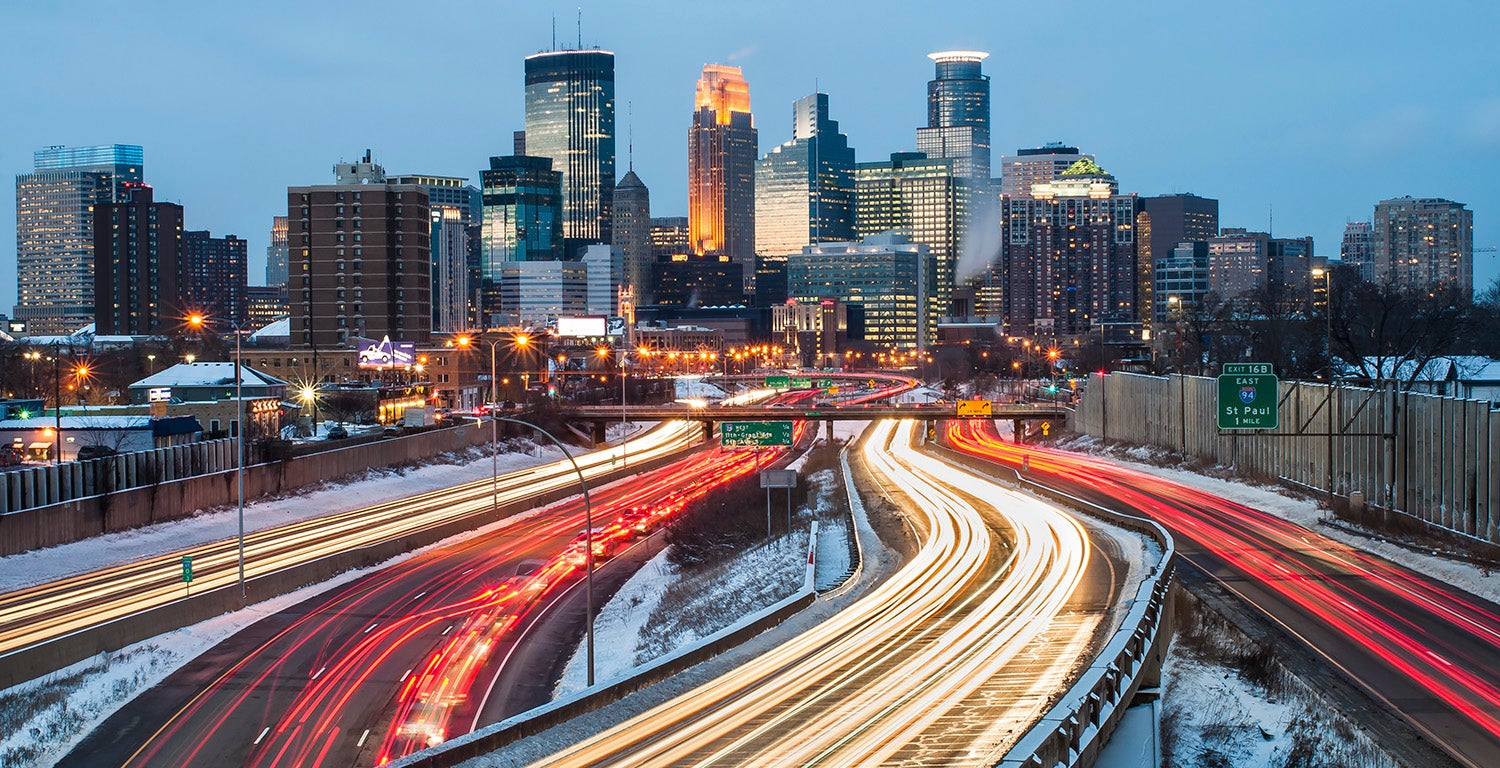Federal highway program led to inequality and polarization, according to Stanford researcher
A Stanford political scientist shows how the American highway system has created affluent Republican suburbs, increased an urban-suburban political divide and led to reduced investment in urban infrastructure.
If you need convincing that the road to hell is paved with good intentions, just talk to Stanford political scientist Clayton Nall about the federal highway system.

Highway-induced residential migration has led to an urban-suburban political divide with consequences for transportation policy, says Stanford political scientist Clayton Nall in his new book. (Image credit: PaulBPhotography / Getty Images)
The unintended consequences of American transportation policy are the subject of Nall’s new book, The Road to Inequality: How the Federal Highway Program Polarized America and Undermined Cities.
Democrats and Republicans have long held different residential preferences, with Republicans more likely to prefer a suburban lifestyle and Democrats more likely to live in central cities. But it was not until the 1950s when modern highways were built that they had the capacity to act on their preferences, at least for those who could afford it.
As a result, this highway-induced residential migration led to more polarized metropolitan areas that leaned more liberal and poorer, said Nall, an assistant professor of political science. In turn, this polarization created partisan differences about how to implement transportation policy – think highways, mass transit and trains – in communities across the country.
Nall’s research shows that transportation policymaking matters greatly to the politics of mobility. Transportation systems deliver opportunity, said Nall. For many urban poor, upward economic mobility is road blocked, literally because of partisan differences. As Nall noted, many Republicans are now a largely nonurban party and oppose urban investment.
Nall spoke with Stanford Report about the consequences of modern transportation policy in America.
What inspired you to do this research?
I grew up outside of Milwaukee, Wisconsin, which is one of the most polarized metropolitan areas in the country, defined by an overwhelmingly Democratic and majority black central city surrounded by white suburbs built along major expressways. I became interested in how that geographic polarization occurred.
One important factor in the postwar period was the construction of the Interstate Highway System. While it’s not the only public policy that helped create contemporary suburbs, they wouldn’t exist without it. Suburbs in many cities have acquired increasingly different politics from central cities. I’m concerned with what that means for our politics from Congress to local governments and how we make decisions about how we are going to allocate our resources for things like transit projects, highways, housing and other policies. How people think about such urban versus suburban policy concerns is increasingly tied to their partisanship. While Democrats are a geographically diverse party, Republicans are increasingly non-urban and hostile to urban concerns.
What are some common myths and misperceptions about transportation policy?
In Washington, D.C., there has been a culture of bipartisanship around transportation that might finally be eroding. What is interesting about that is if you look at the preferences of Americans, they’ve actually been shifting quite a lot in recent decades. In the 1970s, Democrats and Republicans were largely in agreement on funding highways and transit: Republicans on surveys were as supportive of investing in public mass transportation as Democrats were. But they started to split in the 1980s, in part because of geographic polarization.
Today, it’s remarkable to see the sharp elite rhetoric around transportation policy even in some of President Trump’s proposals on infrastructure. There’s a widely circulated adage in Washington that there are “no Democrat roads or Republican roads.” However, I show that Democrats and Republicans are splitting over what kinds of transportation policies to invest in. It’s now become the Republican position not to fund transit. In the party’s recent platforms, they have explicitly opposed urban investment – or what they call “social engineering” – on transit and housing. That was not the case in the 1970s.
You argue that highways facilitated a substantial pro-Republican shift to the suburbs. What explains this partisan, geographic sorting?
When interstate highways were built they did a few things. They reduced travel times in a way that allowed people to make decisions about how they use their extra time. For a lot of white urbanites, they made the decision to move out to the suburbs and spend that extra time commuting for longer distances, to enjoy bigger houses, a better tax base and better suburban amenities, and, of course, more homogeneously white communities. Highways also enabled development of new suburban housing to serve those preferences.
White Americans had a choice over where to live, unlike a lot of racial minorities who were excluded from the suburbs. Highways enabled people to migrate out into the periphery while still commuting back into the center of the city or enjoying job opportunities throughout the metropolitan area. They facilitated the translation of residential preferences into actual moving decisions.
Why should Americans be concerned about transportation policy?
I think much of the discussion of transportation – and this is changing – has focused on how economic inequality forms on spatial lines. Poor cities and poor rural areas are segregated from more affluent suburbs. Transportation programs have been a major mechanism by which these particular spatial patterns of inequality have formed and have been reinforced.
Where you are able to go, where you are able to move does a lot to determine what kind of opportunities you enjoy. If you are a poor person who is seeking upward economic mobility, and you don’t have a car or are unable to afford to drive a car on a long commute each day, you are really reliant on the government to provide you with reliable public transportation. As I show, it’s increasingly partisan differences that are determining whether such programs are funded within our metropolitan areas.
